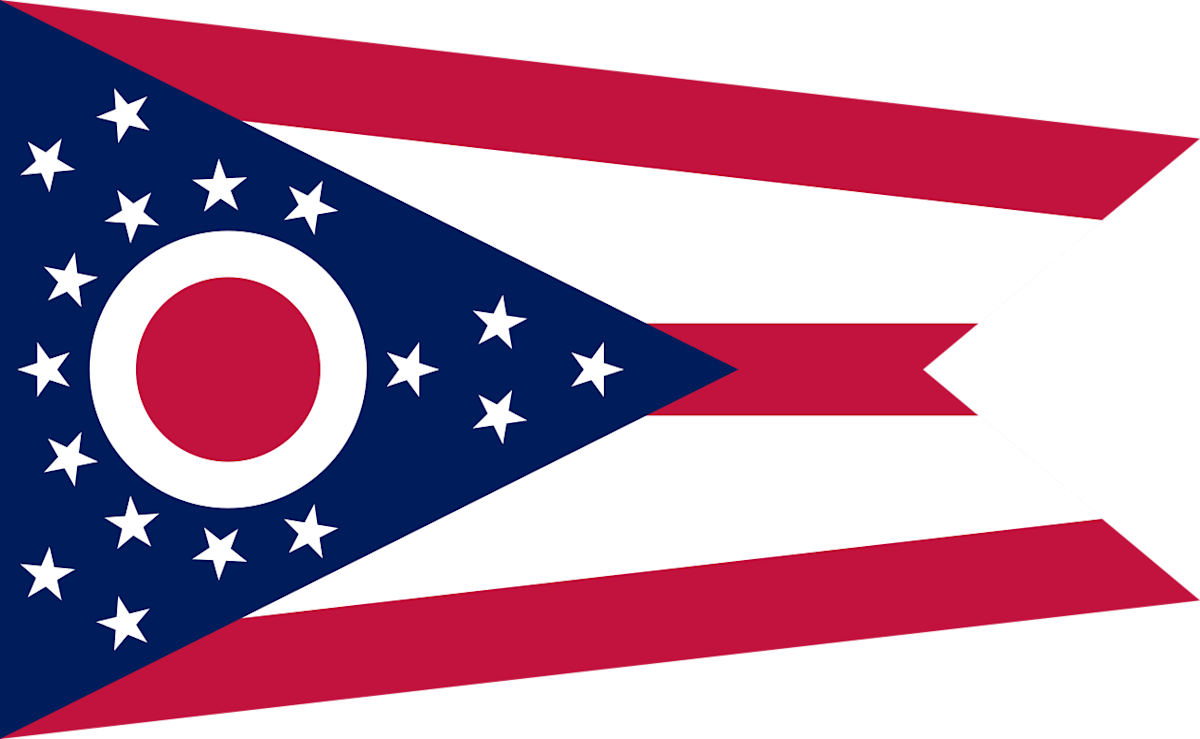Ohio Medical Malpractice Laws

In Ohio, medical malpractice claims have been declining in recent years. In 2021, there were 1,945 claims filed, down from 2,085 in 2020. This reduction is likely due to several factors, including medical malpractice law reforms.
Ohio is one of the few states with a one-year statute of limitations for medical malpractice cases. This means patients have a shorter deadline to file a claim than in other states. Moreover, Ohio has damage caps on non-economic damages, limiting the compensation given to plaintiffs for their pain and suffering.
Despite these reforms, there have been notable medical malpractice verdicts in the state. For example, in 2022, a jury awarded $14.5 million to a mother and her child who had suffered birth injuries. Cases like this highlight the importance of pursuing legal action if you believe you are a victim of medical malpractice.
With that in mind, this article aims to provide a helpful overview of Ohio's pertinent laws, including what constitutes medical malpractice, who can be sued, and what you need to prove to establish negligence.
What Qualifies as Medical Malpractice in Ohio?
Generally, medical malpractice occurs when a healthcare provider's negligent actions or omissions result in an individual’s injury or death. In Ohio, malpractice claims can be filed against medical, dental, optometric, or chiropractic practitioners for acts or omissions while providing patient care.
Common examples of medical malpractice include:
Misdiagnosis: Failing to identify a patient's medical condition correctly.
Failure to diagnose: Overlooking a patient's medical condition altogether.
Nursing negligence: Nursing staff errors or omissions that cause harm to a patient.
Surgical errors: Mistakes made during surgery, such as leaving foreign objects in the patient's body.
Birth injuries: Negligent actions during childbirth, resulting in harm to the newborn.
Medication errors: Prescribing the wrong medication, administering the wrong dosage, or failing to warn patients about potential side effects.
Improper treatment: Providing treatment that is inappropriate for the patient's condition or not performed according to accepted medical standards.
Dental errors: Dental procedure mistakes that cause irreversible damage.
Chiropractic errors: Negligent chiropractor actions that result in patient injury.
In Ohio, "medical claim" encompasses any legal action against a healthcare provider for negligence. Therefore, there is no legal distinction between medical malpractice and similar terms like “medical negligence.” While both terms refer to harmful actions or omissions by healthcare providers, medical malpractice is a specific type of negligence. In other words, not all medical errors constitute medical malpractice.
If you suspect you are a medical malpractice victim, it is ideal to consult an experienced attorney to see if you have a valid legal claim.
Who Can You Sue for Medical Malpractice in Ohio?
Once you determine that you have grounds to file a medical malpractice case, the next step is to find out who is responsible for your injury.
Healthcare Providers
In Ohio, you can file a medical malpractice lawsuit against a licensed healthcare provider if their negligence caused you harm. Note that, aside from doctors, you can take legal action against:
Nurses.
Physicians.
Dentists.
Podiatrists.
Chiropractors.
Physical therapists.
Optometrists.
Physician assistants.
Emergency medical technicians.
In addition, you can hold hospitals and residential facilities liable, which includes anyone responsible for operating a hospital, such as corporations, boards, and associations.
Special Circumstances
In some cases, there are limits to who can be sued, depending on the situation.
Good Samaritans
In Ohio, Good Samaritans are protected from civil liability when providing emergency care or treatment outside a medical facility. However, there are conditions for this protection.
Good Samaritans must act without expectation of payment. They cannot provide care for compensation or with the expectation of being paid.
Good Samaritans must not commit willful or wanton misconduct. They must act with the same care and skill as a reasonably prudent person would in the same situation.
Good Samaritans can only use this protection twice. After two instances of providing care under the Good Samaritan Law, they may be liable for damages.
Cases against the state
Previously, the state of Ohio could not be held accountable for damages. However, the Court of Claims now allows you to file claims against government employees for actions such as medical malpractice. The Court of Claims will then decide whether the employee is exempted from liability.
Medical Malpractice Liability Insurance Requirements
In Ohio, medical practitioners are not legally obligated to carry malpractice liability insurance. However, if they choose not to have this type of insurance, they must inform their patients in writing about this decision.
Despite not being mandatory, medical malpractice liability insurance is highly recommended to safeguard practitioners against potential legal liabilities arising from medical negligence claims. Standard policies typically offer coverage limits of $1 million per claim and a total aggregate limit of $3 million annually.
What Is the Statute of Limitations in Ohio for Medical Malpractice Cases?
As stated previously, you have a limited time to file a medical malpractice lawsuit against a healthcare provider. This deadline, known as the statute of limitations, is generally one year from the date of the alleged act of negligence. However, there are a few exceptions to this rule.
For instance, if medical malpractice results in your family member’s demise, you have two years to file a wrongful death lawsuit. Additionally, minors and individuals with mental disabilities may have an extended deadline. For minors, the statute of limitations begins when they turn 18, while for those with mental disabilities, it commences when their disability is healed.
Ohio also has a savings statute. If you decide to dismiss your claim but wish to refile it, you have one year from the date of dismissal to do so.
Statute of Repose
The statute of repose establishes a strict deadline for filing medical malpractice lawsuits. Once it expires, you may not pursue legal action against the healthcare provider. In Ohio, the statute of repose for medical malpractice claims is four years.
Discovery Rule
The discovery rule provides an exception to the latter. If you discover an injury caused by medical malpractice within three years of the negligence occurring, you have one year to file a claim, even after the four-year statute of repose.
Wrongful Death and Foreign Object Cases
Wrongful death claims and cases involving foreign objects left in the body are exempt from the statute of repose. If you discover a foreign object left inside your body following a procedure, you have one year from the date of discovery to make a claim, even if the statute of repose has passed.
Tolling Statute
Ohio's tolling statute temporarily pauses the statute of limitations when the defendant conceals the existence of the negligence. However, the statute of repose is not affected by the tolling statute. This means that even if the defendant is out of the state or country, the statute of repose continues to run.
In the case of Richard Elliot v. Abubakar Atiq Durrani M.D., Elliot filed a medical malpractice lawsuit against Durrani in 2015 for negligence that occurred in 2010. Durrani, who fled to Pakistan in 2013, filed a request to dismiss the case, which the trial court granted. This is because Elliot filed his complaint after the statute of repose had expired.
Afterward, Elliot appealed his case to the Ohio Supreme Court, which found in 2022 that the tolling statute applies even if the defendant is out of the country. However, in 2023, HB179 was filed, stating that the tolling statute does not affect the statute of repose if the defendant has absconded or concealed their existence.
At present, the latter reform ensures that the statute of repose remains a strict deadline for filing medical malpractice claims, even if the defendant is unavailable.
What Do You Need to Prove in an Ohio Medical Malpractice Case?
In a medical malpractice case, you, the plaintiff, may prove the defendant's negligence through the following factors:
Duty of care: The defendant, a healthcare professional, had a legal obligation to provide you with appropriate and adequate medical care.
Breach of duty: The defendant failed to adhere to the established standards of care, resulting in a deviation from what a reasonably prudent healthcare professional would have done under similar circumstances.
Causation: The defendant's breach of duty directly caused your injuries. There must be a clear connection between the defendant's negligence and the harm you suffered.
Damages: You have suffered actual and measurable harm due to the defendant's negligence. This could include lost wages and medical expenses.
Proving medical malpractice is a complex endeavor that requires careful planning and thorough evidence gathering. As such, you may need to enlist the help of expert witnesses to support your claims.
Medical Expert Witness Eligibility Requirements
In medical malpractice cases, collaborating with a medical expert is crucial to establishing the defendant's negligence. These professionals play a pivotal role in evaluating your medical records, identifying deviations from the standard of care, and presenting compelling evidence in your favor.
Should your medical records be unavailable, you have the right to request a copy from the medical institutions. These institutions are obligated to provide patients with their records upon request.
To ensure the credibility of medical expert testimony, stringent qualifications must be met. These include:
Possessing a valid medical license issued by a state licensing board or an equivalent authority.
Dedicating at least half of their professional career to active medical practice.
Practicing the same or a closely related specialty as the defendant.
Holding board certification in a relevant specialty, recognized by the American Board of Medical Specialties, if applicable.
Failure to meet any of these requirements can lead to the disqualification of the medical expert, potentially resulting in the dismissal of your case without prejudice.
Affidavit of Merit
In Ohio, an affidavit of merit is crucial when filing a medical malpractice lawsuit. This document states that you have a justifiable case against the defendant based on sufficient medical evidence. Note that a separate affidavit must be provided for each defendant involved in the claim. Furthermore, a medical expert must sign the affidavit explicitly outlining how the standard of care was breached.
Neglecting to include an affidavit of merit in your filing may result in case dismissal. However, this does not prevent you from re-filing the lawsuit within the statute of limitations. If you wish to join an existing medical malpractice claim, you have 180 days from the filing date of the original complaint to do so.
I'm Sorry Law
Ohio has an "I'm Sorry Law," which protects healthcare providers from having their expressions of sympathy used against them in medical malpractice lawsuits. For instance, if a surgeon apologizes to a patient for an error made during surgery, that apology cannot be used as evidence that the surgeon was negligent.
The purpose of this ordinance is to encourage honest communication between healthcare providers and patients. By protecting medical professionals, the law encourages them to be more open about mistakes and offer patients the support and compassion they need.
How Much Can You Sue for Medical Malpractice in Ohio?
The compensation you can receive in a medical malpractice lawsuit depends on several things, such as the extent of your injuries, the number of parties involved in the case, and the court's ruling. As such, it is advisable to speak with an attorney to develop a strong case strategy and determine the appropriate damages to seek.
Types of Damages
In Ohio, medical malpractice lawsuits can result in two types of compensatory damages: economic and non-economic.
Economic damages, such as lost wages and medical expenses, are quantifiable and straightforward to calculate. Conversely, non-economic damages, such as pain and suffering, loss of life's enjoyment, and disfigurement, are intangible and more challenging to quantify.
Ohio law imposes caps on non-economic damages. The cap is $250,000 or three times the economic damages, with a maximum of $350,000 per plaintiff. In multi-plaintiff cases, the total damages that can be obtained are $500,000.
However, if the injuries involve permanent deformity, amputation, or loss of a body part, the cap is $500,000 per plaintiff or $1 million for each case. Economic damages, on the other hand, have no limit.
In some instances, punitive damages may also be awarded to punish the defendant for their reckless or intentional misconduct. The cap for punitive damages is twice the amount of compensatory damages, with a maximum of $350,000.
Negligence System
When determining the percentage of fault of the parties involved, Ohio employs a comparative negligence system. Essentially, how much you are to blame for your injury affects the compensation you can receive.
For instance, if a court awards you $200,000 for injuries due to a healthcare provider's negligence but finds you 20% at fault, your compensation will be reduced to $160,000. If your percentage of fault exceeds 50%, you will be ineligible for compensation.
Methods of Obtaining Compensation
If you wish to receive compensation for your medical malpractice injuries and losses, your case must be settled outside of court or through a trial. Know that most medical malpractice cases may be resolved through negotiation or arbitration.
Negotiation is a process in which you and the healthcare provider discuss the case amicably. If you can reach an agreement, you will sign a release form, which means you give up your right to sue the healthcare provider in the future.
Meanwhile, arbitration is a more formal process in which you and the healthcare provider work with a neutral third party who will review the evidence and make a decision about the case. Note that you and the defendant must agree to be bound by the arbitrator's decision.
Ultimately, if an agreement cannot be reached, your case can be resolved through litigation, which involves going to trial.
How Much Does It Cost to Pursue a Medical Malpractice Case in Ohio?
Before filing a medical malpractice lawsuit in Ohio, it is vital to know the potential costs involved. These include:
Attorney fees: Most attorneys in Ohio handle medical malpractice cases on a contingency fee basis, which means they only get paid if you win your case. The average contingency fee for a medical malpractice case in Ohio is between 25% and 40% of the award you receive.
Court filing fees: These will depend on the court. For example, the Ohio Court of Claims charges $25 for every complaint. Meanwhile, the Delaware County Clerk of Courts charges $210 for civil claims plus an extra $5 for medical malpractice cases.
Expert witness fees: As previously established, hiring an expert witness is often necessary in medical malpractice cases. Expert witnesses are usually compensated by an average of $350-$500 per hour.
Basically, filing a medical malpractice lawsuit may require thousands of dollars. Thus, carefully weigh the financial implications.
Legal Resources for Medical Malpractice Victims in Ohio
Overall, if you have suffered due to medical malpractice in Ohio, you have the right to seek legal recourse. Several resources are available to help you, including experienced medical malpractice attorneys, government agencies, and nonprofit organizations. With the right support, you can hold the responsible parties accountable and obtain the compensation you deserve.
Ohio State Bar Association
The Ohio State Bar Association has catered to attorneys, law students, and the general public for over 130 years. Its referral services assist residents in finding a lawyer. Furthermore, it has an online directory where interested individuals can search for an attorney based on region and practice area. It also publishes articles on topics such as personal injury, healthcare, and civil rights.
Ohio Department of Insurance
The Ohio Department of Insurance is a state agency that protects consumers through regulation and education. It gives reports on insurance-related topics, including medical malpractice claim statistics. It also has the Medical Liability Data Collection application, which enables insurance companies, self-insurers, and risk retention groups to submit required medical liability closed claims data. People can contact the department online for more information.
State Medical Board of Ohio
The State Medical Board of Ohio is the government agency in charge of physician licensing and supervision in the state. It also handles complaints filed against medical practitioners. The agency looks into various issues, such as improper prescription, unlicensed practice, minimal standards of care, and unethical behavior. If a licensee wishes to report wrongdoing, such as medical malpractice, they can do so online or call the Medical Board's complaint hotline at 1-833-333-SMBO (7626).
Expertise.com StaffAuthor
Step into the world of Expertise.com, your go-to hub for credible insights. We don't take accuracy lightly around here. Our squad of expert reviewers, each a maestro in their field, has given the green light to every single article you'll find. From rigorous fact-checking to meticulous evaluations of service providers, we've got it all covered. So feel free to dive in and explore. The information you'll uncover has been stamped with the seal of approval by our top-notch experts.




